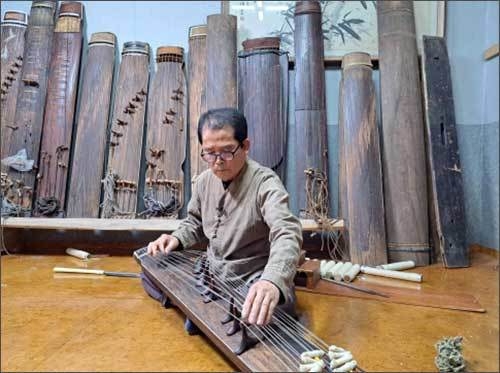- Get link
- X
- Other Apps
Korean Craftsmanship & Heritage
🏺 Ceramics (도자기)

Photo: Buncheong ware jar crafted with traditional Korean ceramic technique.
Korean ceramics represent centuries of refined artistry, including celadon, white porcelain, and buncheong ware. These items reflect balance between function and beauty, often decorated with natural motifs. Master potters preserve ancient techniques passed down through generations. Korean ceramics played a vital role in trade and court culture, especially during the Goryeo and Joseon periods.
🔨 Metal Craft

Photo: Traditional bangjja bronze ware, crafted by Korean metal artisans.
Korea’s metalworking legacy includes bangjja bronzeware, where artisans hammer alloyed bronze into shape. This method creates durable, resonant bowls, gongs, and ceremonial objects. Bangjja is prized for its cleanliness and distinctive sound. Today, these items are still used in rituals, temples, and cultural events.
🌸 Lacquer & Inlay

Photo: Mother-of-pearl lacquerware box (najeonchilgi) showcasing intricate craftsmanship.
Najeonchilgi is Korea’s traditional lacquer art that uses crushed mother-of-pearl inlays to decorate boxes, furniture, and screens. The process requires meticulous skill, layering natural lacquer and polishing each surface to perfection. The designs often depict nature, longevity symbols, or auspicious animals, blending elegance with symbolism.
🪑 Woodcraft

Korean woodcraft includes everything from hanok architecture to furniture and altar tables. Artisans use traditional joinery without nails, focusing on natural beauty, symmetry, and durability. Woodwork reflects Confucian values of modesty and harmony. The legacy of somokjang, or master woodworkers, continues in modern reinterpretations of Korean interiors.
🎵 Instrument Craft

Korean instrument makers build traditional string, wind, and percussion instruments like gayageum, haegeum, daegeum, and janggu. These instruments are handcrafted using wood, bamboo, silk, and animal hide. Each piece is tailored to produce rich, authentic tones suited to Korean traditional music. This craft sustains Korea’s unique musical heritage.
💬 Final Thoughts
Korea’s intangible heritage is alive in the hands of these artisans. Their dedication sustains beauty, functionality, and tradition across generations.
- Get link
- X
- Other Apps
Comments
Post a Comment